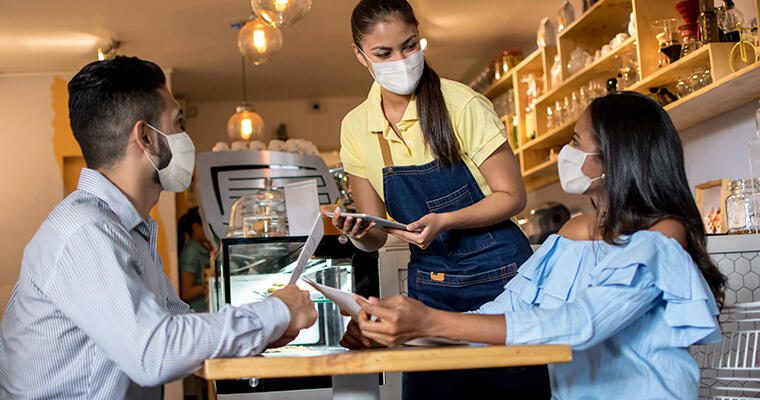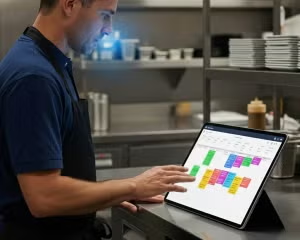Your restaurant’s welcome sign is lit and you’re committed to pandemic safety and guest comfort. Masks, gloves, socially distanced seating and strict sanitization practices are in place. The latest wrinkle is contact tracing.
Contact tracing means collecting guest names, phone numbers or other contact information, then safely keeping it to use only in case of a positive COVID-19 test. At that time, the information can help health authorities alert restaurant guests and staff who may have had contact with the infected person.
What about guest privacy?
Collecting information can be controversial. Whether contact tracing is a legal mandate or a business choice, train your staff on how to handle objections and when to raise situations to management. Here are some factors to consider:
Secure customer data (on cards in a lock box, or using technology security).
Know how long to keep data (some areas mandate a number of days).
Protect customer privacy (never share or add to your marketing database unless the customer explicitly opts in).
How do I collect data?
This is new for everyone. It can be awkward to ask for personal data and it’s uncomfortable to provide it. These options can ease the stress of collecting information from your patrons:
Generate a QR Code
Create a simple form in Google, Excel or Survey Monkey and ask each person to scan the code and enter information. You also have a digital tablet at the entrance for people without smartphones. Use this free QR Code generator from VIPinsiders or generate one of your own.
Use a reservation system
Reservation tracking systems, such as OpenTable, collect guest information. Some platforms can be used on an iPad or other tablet for self-check-in.
Make it fun
Collect information on a raffle ticket to be entered into a weekly drawing, and give out gift cards as prizes. Everyone just needs to drop a ticket into a secure raffle box.
Have a paper form
Have your server collect diners’ information on a simple form (think index card) before ordering. This can prevent crowds at the entrance during busy times. Also, ask diners if they want to be added to your restaurant’s email list for alerts about upcoming specials.
Rely on your POS system
Have the server enter each person’s name and phone number in your POS ordering system. This is a good way to organize paper forms.











